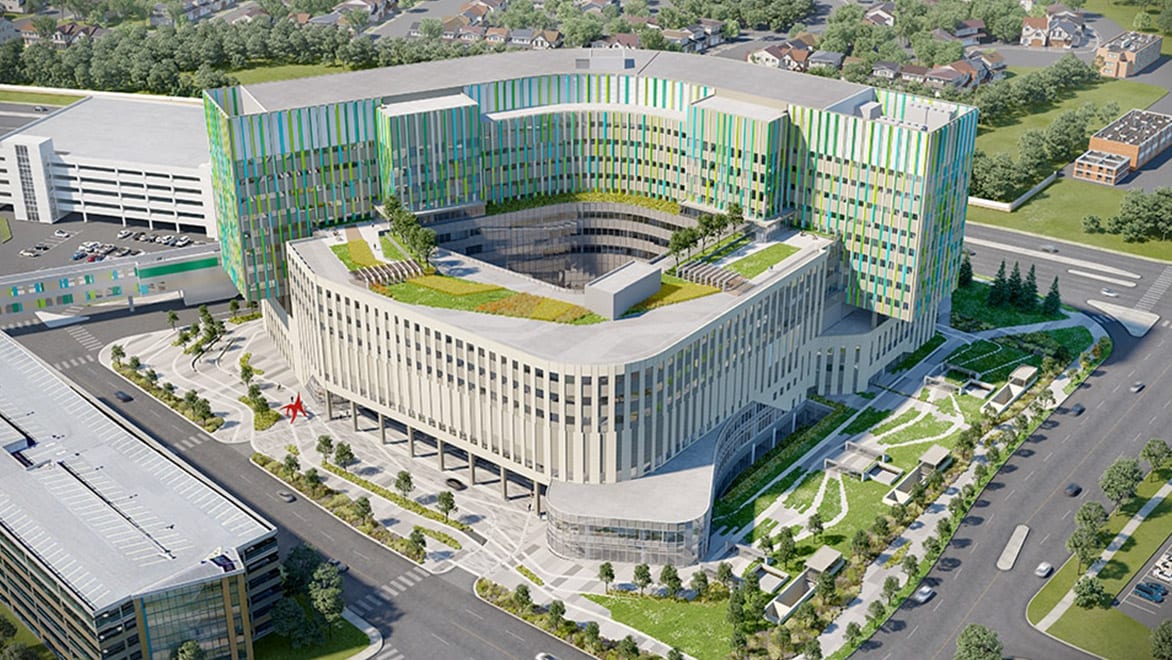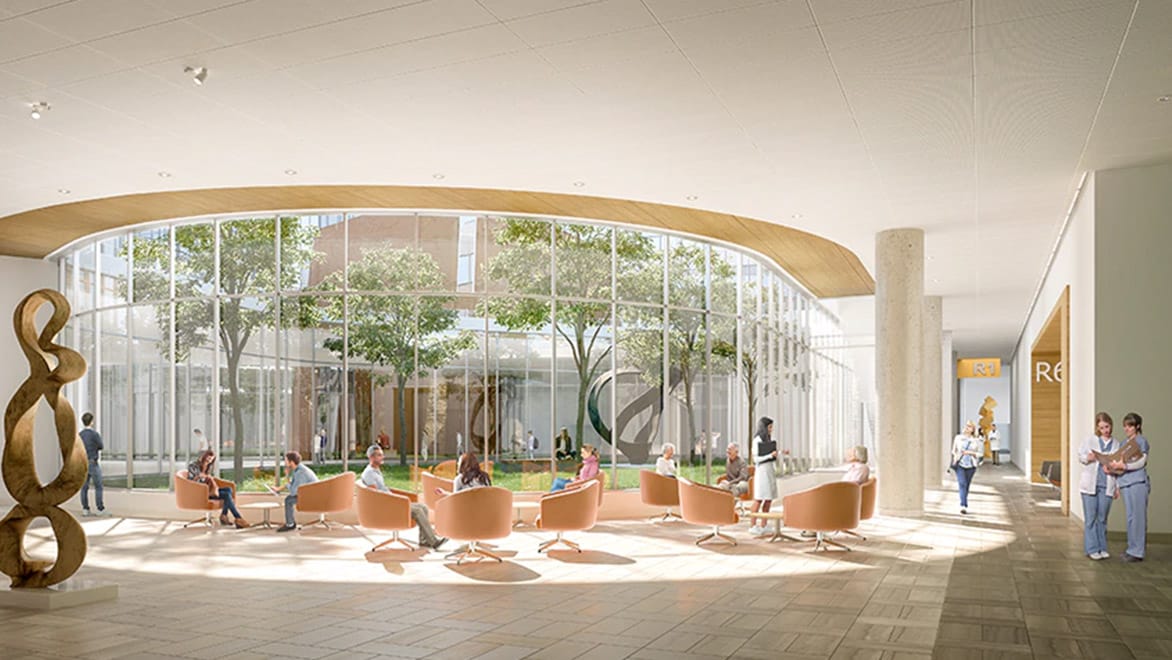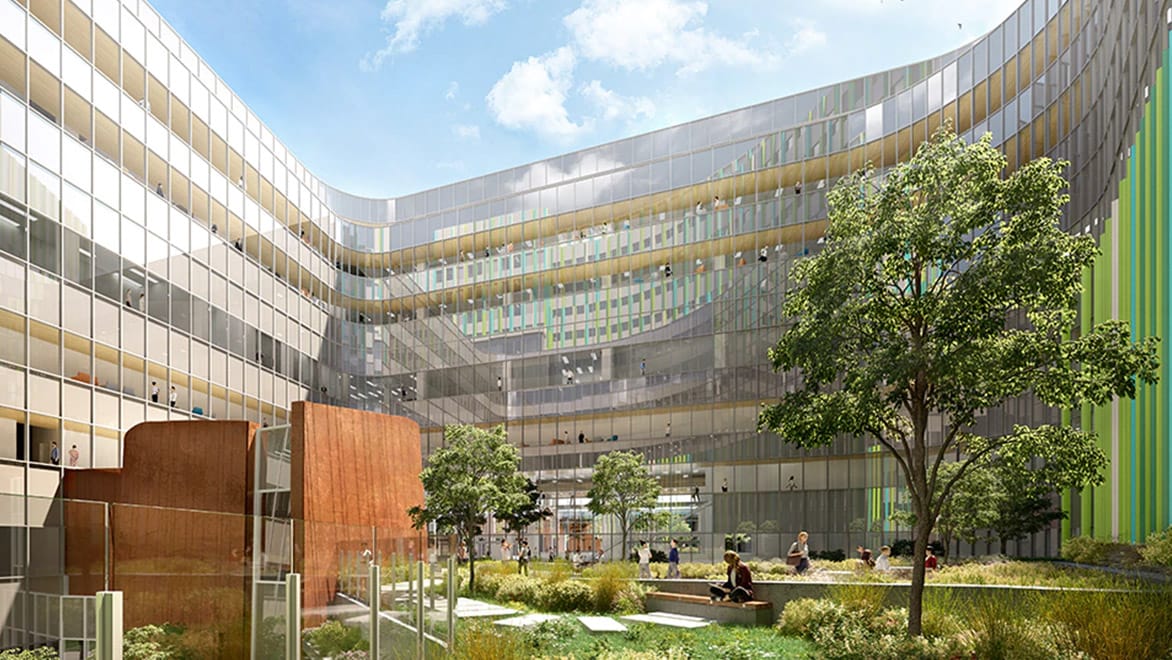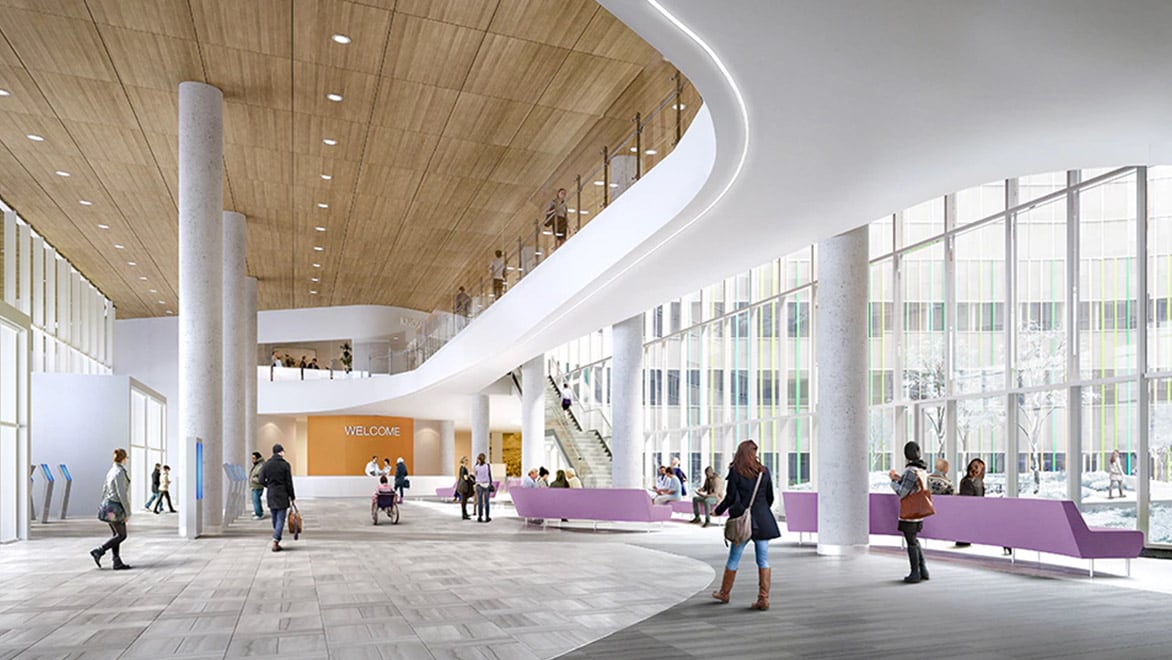DIALOG
DIALOG Embraces Cloud Technology to Meet $1.4B Project Schedule
CUSTOMER SUCCESS STORY
Share this story
BIM 360 Design helps make North America's second largest cancer treatment center a reality
The Calgary Cancer Center is set to be North America’s second largest cancer research and treatment center. With over 2 million square feet of clinics, radiotherapy vaults, and research lab space, inventive design firm, DIALOG, knew embracing cloud technology -- one that provided realtime collaboration between various stakeholders-- was the only way to meet the challenges of a project of this size and scope.
A complex project for a tech-forward design firm
For inventive design firm DIALOG, embracing the latest technologies is part of their DNA. When tasked with their most ambitious healthcare project to date, the integrated firm pushed that ethos to a new level.
The Calgary Cancer Center (CCC) is North America's second-largest cancer treatment and research facility. Over 2 million square feet, the $1.4 billion project — including inpatient units, outpatient clinics, radiotherapy treatment vaults, and medical research lab space — is set to increase the capacity for cancer care for Southern Alberta and beyond.

Rendering of Calgary Cancer Center, a 50-50 collaboration between DIALOG and Stantec Architecture.
DIALOG + Stantec's design, two curving L-shapes that meet in an embrace around an all-season exterior garden, speaks to the team's embrace of the fast-paced project and the technology required to deliver it. "
"We walked into this project knowing that it's not a traditional project," says Esmail Kalaf, manager of design technology for DIALOG, "Which means that the workflow that we were used to had to change from the beginning."
Up for the challenge
The sheer size and scope of the CCC required cross functional partnership between various firms. DIALOG believes in the power of multidisciplinary collaboration, so the team worked with multiple partners across geographies. This included PCL, who are the design builder, and Stantec, as design partners.
Ensuring consistent communication and coordinated collaboration among all parties was the main challenge — an endeavor made even more difficult by the fast track nature of the project. To meet it, the team needed technology tools that would help them keep everyone moving forward, communicating, and collaborating efficiently.

Rendering of Calgary Cancer Center, a 50-50 collaboration between DIALOG and Stantec Architecture.
Embracing the cloud
DIALOG is no stranger to cloud-based collaboration technology. In 2015, they adopted it for their now-landmark Calgary Central Library project. Because they had worked with architects in multiple locations, it was the best option. But they were initially cautious in their decision to collaborate via the cloud.
"Our approach is always to test new tools or new technology before we jump in," says Kalaf. "So we tested all the technologies that were around at that time and the cloud was the solution that was answering all of our challenges."

AutoCAD drawing of lobby seating. Courtesy of DesignsBy JCM.
Success using the cloud for the Calgary Central Library project in 2015 gave Kalaf the confidence that the cloud, including BIM 360 Design (previously Collaboration for Revit), was the answer for the CCC project as well, which at its peak had users communicating between North America and Europe. He says it was "the only way to do the job and meet the deadlines from a technology perspective."
Kalaf knew he had to maximize the use of this technology to meet the project's stringent timeline. "We had to take BIM to the next level," Kalaf says. That meant giving contractors access to the cloud, something he admits the industry in Canada was not yet familiar or comfortable with.
But the move would allow real-time coordination between design intent and the construction model, which would ultimately help eliminate major issues on site. Convincing his team of the time saving advantages and calming risk concerns, Kalaf got the green light to move forward with BIM 360 Design on the project.
Comparing the numbers, saving time
Using cloud-based technology, they were able to meet the aggressive design schedule required of the design build delivery model.
Internally, DIALOG uses Revit Server with great success, but learned that once they started collaborating with external consultants, download and file open times took far too long, for a large, complex project like CCC. It was clear cloud-based BIM collaboration would save time.

Rendering of Calgary Cancer Center, a 50-50 collaboration between DIALOG and Stantec Architecture.
"With the cloud, there is no IT infrastructure that needs to be set up, it's just a matter of creating a project, and placing your model on the cloud," says Kalaf. "With Revit server it would take 2 hours to open a model and 1 hour to sync it. With BIM 360 Design, it takes 45 minutes max depending on the complexity of the job."
This improvement alone saved hundreds if not thousands of hours throughout the course of the CCC project which involved more than 60 models on the cloud.
"All you need is an internet connection, and you're able to work on that file anywhere you want," says Kalaf. "That is a huge advantage for BIM 360 and the cloud, over Revit server."
Getting their dream team on board
Although multiple firms were working on the CCC project, the approach was a collective one. "I have never seen a team with that energy," says Kalaf.
The collaboration, coordination and communication was all they'd hoped for and more, including among the dedicated BIM team, which had leads on both the design intent and construction sides. But they wanted to push it further, by including trade partners on the cloud to contribute to the design as well.

Rendering of Calgary Cancer Center, a 50-50 collaboration between DIALOG and Stantec Architecture.
"Yes, there's risk when putting the trades on the same platform as the designer, but once we were able to prove that we can track who is accessing the models and syncs, we were able to convince the other designers this was the best option," says Kalaf.
As a result, real-time collaboration allowed for live changes to the model without the wait for uploads and downloads. It also allowed designers to receive feedback from contract and trade partners instantaneously. "Decision-making on the design portion of the project was 10 times faster, then a traditional approach" Kalaf says.
“Decision-making on the design portion of the project was 10 times faster, then a traditional approach.”
—Esmail Kalaf, Manager of Design Technology, DIALOG
Doing strategic work up-front
From the get-go, DIALOG and the team put parameters in place to facilitate the project's success. The plan includes best practices and put access control measures in place.
CCC was also one of their first projects to have a BIM deliverable, a facilities management model, at the end of the job. Doing a lot of upfront work, they were able to avoid manual work.
“The design builder is delivering the facilities management model by having a database that's able to extract information and put it in a spreadsheet and make it presentable to the clients, without us spending a lot of time on the manual process of gathering that information,"says Kalaf.
DIALOG used a database connected to Revit to deliver the data. "If we had approached this as a traditional job, we would have realized too late that we needed to enter all the data manually. It would have been a failure. We avoided that by doing all the work upfront," says Kalaf.
A model for change
DIALOG's careful planning and strategic technology decisions are proving out already.
"We're confident it will be 100% complete for PCL to take it on and add their construction-related documents," Kalaf says. And already, the project is winning awards, including CanBIM's Design and Engineering Award.

Final installation of lobby seating. Courtesy of DesignsBy JCM.
"The industry is ready for a change," says Kalaf. "We can't still live in an environment or industry where we are afraid to share our information. CCC is a living example of that.We could have had options where we had team members working seven days a week, 18 hours a day, but we decided to go with an approach of 'Let's share this with everybody, let's work as a team and make decisions better to meet deadlines.'"
"Autodesk is going in the right direction," he says, "And what that's going to do is eventually help [make] the adoption of the cloud much faster. Not only the cloud, but it's also going to help with the adoption of BIM 360 Docs and the other modules that come with it."
DIALOG has proved that through the use of next-generation tools like BIM 360 Design, it's possible to meet the demands of ambitious projects like the Calgary Cancer Center with award-winning results.
Achieve more with design collaboration software
BIM 360 Design boosts productivity, improves project efficiency, and accelerates delivery.